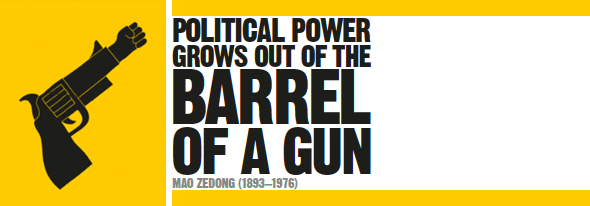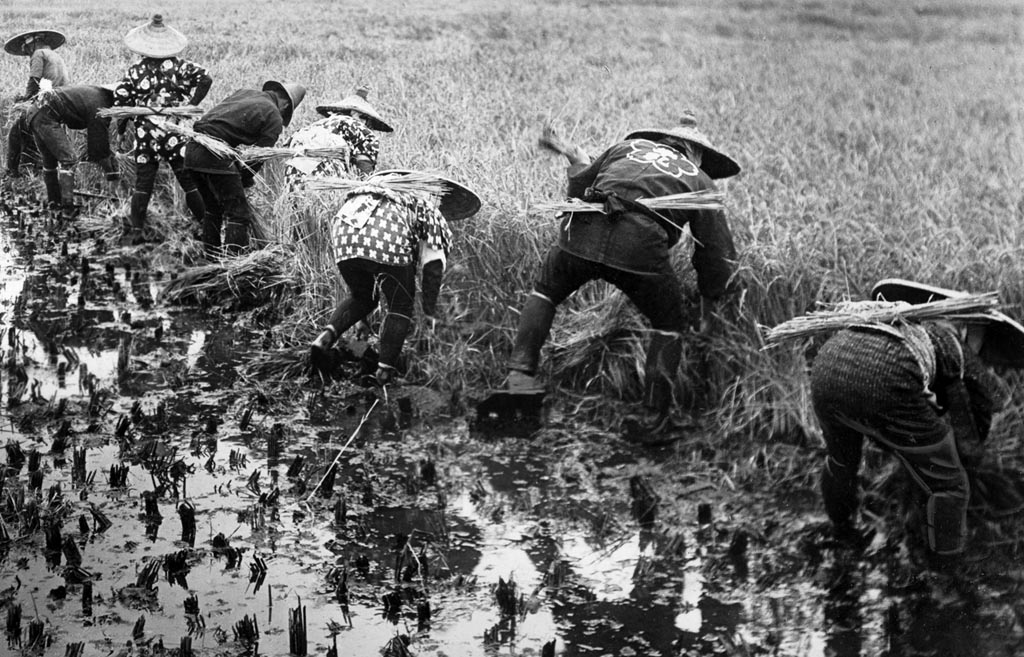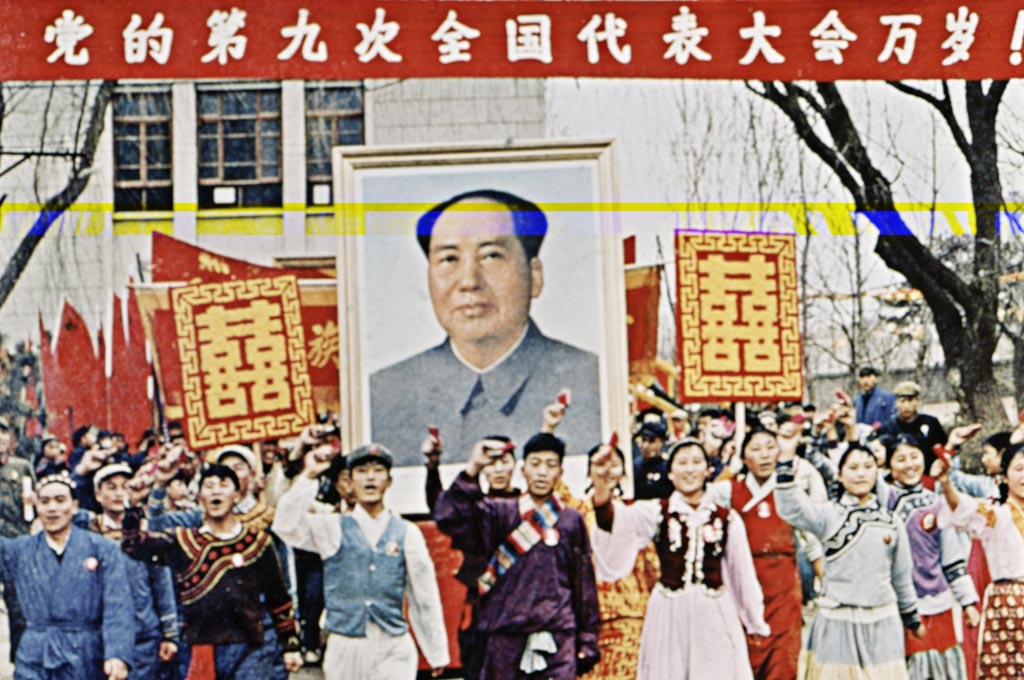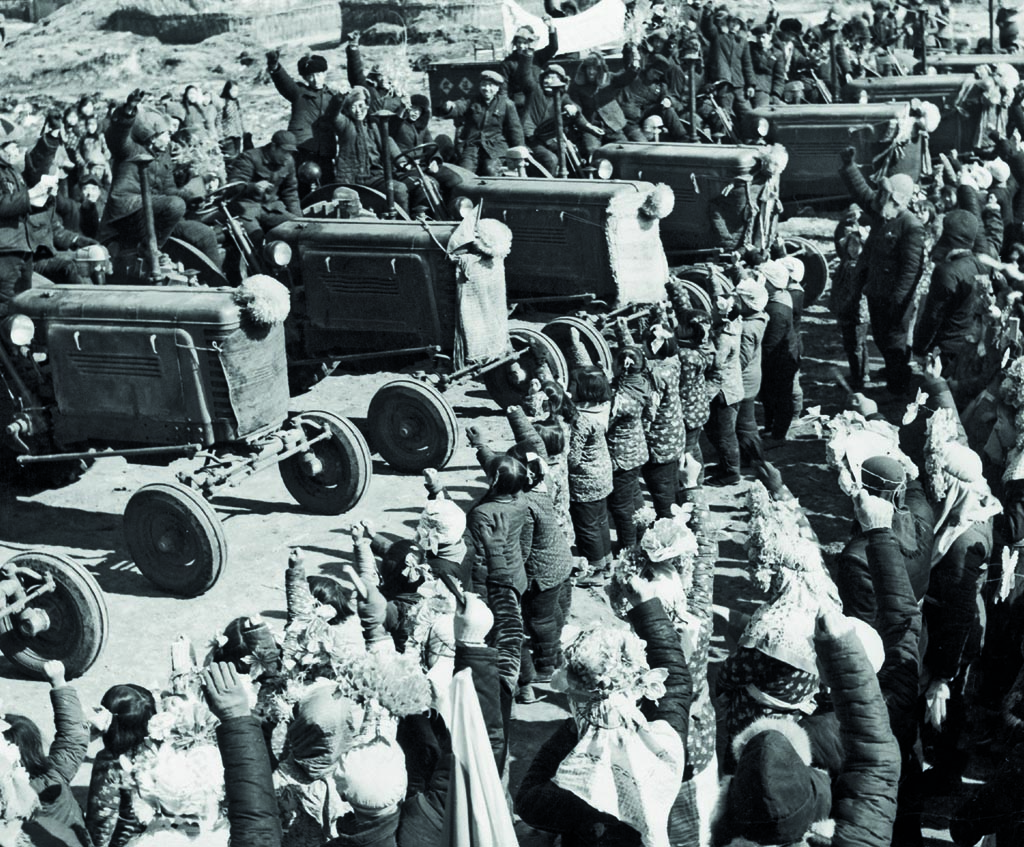
IN CONTEXT
Marxism-Leninism
Modernization of China
1912 The Republic of China is established, bringing to an end more than 2,000 years of imperial rule.
1919 The May Fourth Movement politicizes events in China, leading directly to the foundation of the Communist Party of China in 1921.
1966–76 Mao’s Cultural Revolution, the suppression of supposedly capitalist, traditional, and cultural elements in China, leads to factional strife and huge loss of life.
1977 Deng Xiaoping implements a program of economic liberalization, leading to rapid growth.
At the beginning of the 20th century, Chinese students and intellectuals, including the young Mao Zedong, began to learn of the socialist ideologies on the rise in Europe, and apply them to China. At the time, Marxism was not as compelling to these young Chinese as Mikhail Bakunin’s theory of anarchism and other schools of Utopian socialist thought. Marx had stipulated that a sound capitalist economy was the necessary basis for a socialist revolution, but China was still primarily agrarian and feudal, with no modern industry or urban working class.

Revolutionary inspiration
Before the Russian Revolution in 1917, there was little to encourage disaffected Chinese intellectuals in Marx’s conviction that the processes of capitalist production must achieve critical mass before a workers’ revolution could succeed. Looking back on the immense changes he had carved out on the Chinese political landscape, Mao would later assert that the Bolshevik uprising struck political thinkers in China like a “thunderbolt.” Events in Russia were now a matter of intense interest because of the perceived similarities between the two backward giants. Traveling to Beijing, Mao became the assistant and protégé of the university librarian Li Dazhao, an early Chinese communist who was studying, holding seminars, and writing about the Russian revolutionary movement.
Mao took Marxist and Leninist ideas and adapted them to resolve the problem of a workers’ revolution in a land of peasants. Lenin’s theory of imperialism envisioned communism spreading through developing countries and gradually surrounding the capitalist West. Mao believed that countries still mired in feudalism would skip the capitalist stage of development and move straight into full socialism. An elite vanguard party with a higher class “consciousness” would instill revolutionary values and a proletarian identity in the peasantry.

Rice farmers and other peasants handed over their land to cooperatives in a collectivization program that would form a key part of Mao’s drive to reform China’s rural economy.
Politicization of the people
The excitement generated by the Russian Revolution might have been confined to university discussion groups had it not been for the Western Allies’ heedless betrayal of Chinese interests following World War I. More than 140,000 Chinese laborers had been shipped to France to support the war effort of the Triple Entente —Britain, France, and Russia— with the understanding that, among other things, the German protectorate of Shandong on the northeast coast of China would be returned to Chinese hands after the war. Instead, the Allies gave the territory to Japan at the Versailles Peace Conference of 1919.
"It is very difficult for the laboring people… to awaken to the importance of having guns in their own hands."
Mao Zedong
Students across China protested against their country’s “spineless” capitulation. City workers and businessmen in Shanghai joined them, and a coalition of diverse groups united as the May Fourth Movement to force the government to accede to their demands. China’s representatives at Versailles refused to sign the peace treaty, but their objections had no effect on the actions of the Allies. The real significance of the May Fourth Movement was that vast numbers of Chinese people began to think about their precarious lives and the vulnerability of their country to threats from the outside world. It was a significant turning point for Chinese political thought, in which Western-style liberal democracy lost much of its appeal, and Marxist-Leninist concepts gained traction.
Mao was one of the radical intellectuals who came to the fore at this time and went on to organize peasants and workers in the Communist Party. He would never forget the lesson of Shandong: to negotiate from a position of weakness was to lose. The ultimate power in politics is the power of armed force. Mao would be ruthless both in seeking armed power and in his willingness to use it.
In 1921, Mao attended the First Congress of the Communist Party of China (CPC) in Shanghai, and in 1923 he was elected to the party’s Central Committee. He spent the 1920s organizing labor strikes, studying, and developing his ideas. It became clear to him that in China, it would have to be a rural and not an urban proletariat who would carry out the revolution.
Crucible of communism
The CPC shared the ideological outlook of Marxist-Leninism with the Kuonmintang (KMT)—China’s nationalist and antimonarchist party founded by Sun Yat-Sen, with links to Soviet Russia—and both had the overall aim of national unification. However, the Communists’ popular movement of peasants and workers was too radical for the KMT, who turned on their CPC allies in 1927, crushing them and suppressing their organizations in the cities. This violent conflict was the crucible from which the doctrine of “Maoism” emerged as a guerrilla-style rural Marxian revolutionary strategy.
"Politics is war without bloodshed, while war is politics with bloodshed."
Mao Zedong
In 1934 and 1935, Mao—now the chairman of the Chinese Soviet Republic, a small republic declared in the mountainous region of Jiangxi, southeast China— cemented his position as foremost among Chinese communists during “The Long March.” The first of a series of marches, this 6,000-mile (9,600-km) ordeal, lasting over a year, was ostensibly undertaken to repel Japanese invaders, but it also served as a military retreat by the Communists’ Red Army to evade the Nationalist forces led by Chiang Kaishek. They crossed 18 mountain ranges and 24 major rivers, and only one-tenth of the original force of 80,000 soldiers and workers who set out from Jiangxi in October 1934 survived the march to reach Shanghai a year later. Mao’s supremacy was sealed, and he became leader of the CPC in November 1935. Following Japan’s defeat by the Allies in World War II, the resumption of civil war in China, and the eventual surrender of Nationalist forces, the communist People’s Republic of China was finally established in 1949, with Mao at the helm.

Mao’s cult of personality was relentlessly reinforced by mass demonstrations of crowds carrying posters of their leader and copies of his Little Red Book of quotations.
The Great Helmsman
In 1938, in his concluding remarks to the Sixth Plenary Session of the Sixth Central Committee of the CPC, Mao expounded on his theory of revolution. He maintained that in a China that was still semifeudal, the truly revolutionary class was the peasantry, and only military struggle could achieve revolution; demonstrations, protests, and strikes would never be enough. With the peasant-proletariat armed and powerful, Mao—now known as “The Great Helmsman”—did bring about many changes for the good. Among other measures, he banned arranged marriages and promoted the status of women, doubled school attendance, raised literacy, and created universal housing. However, Mao’s admiration for Stalin and his infatuation with Marxian language and theories of revolution disguised the many thousands of brutal killings that he and his forces committed on the road to power. There were to be many millions more—some from the violent repression of those deemed opponents of China, and some from neglect. In the space of three decades, Mao forced the country to almost complete self-sufficiency, but at an unspeakable cost in human life, comforts, freedoms, and sanity.
"Without an army for the people, there is nothing for the people."
Mao Zedong
The Five Year Plan launched in 1953 achieved spectacular increases in output, and was followed by the “Great Leap Forward” in 1958. By forcing the Chinese economy to attempt to catch up with the West through mass-labor projects in agriculture, industry, and infrastructure, Mao brought about one of the worst catastrophes the world has ever known. Between 1958 and 1962, at least 45 million Chinese people —mostly peasants—were tortured, overworked, starved, or beaten to death, a fatality rate only slightly smaller than the entire death toll of World War II.
The atrocities of this period were carefully cataloged in the now-reopened Communist Party archives. These records show that the “truly revolutionary class”— Mao’s chosen people in the great struggle for social justice—were in fact treated as faceless, expendable objects by Mao and the Party.
In contrast to Marx’s conviction that socialism would be an inevitable development from the material and cultural achievements of capitalism, Mao correlated the poverty he saw in China with a moral purity that he believed would lead to a socialist Utopia. In 1966, the Cultural Revolution was introduced with the aim of cleansing China of “bourgeois” influences. Millions were “reeducated” through forced labor, and thousands executed.
Mao in modern China
The politics that for Mao grew “out of the barrel of a gun” turned out to be the totalitarian politics of terror, brutality, fantasy, and deceit. On his death, the CPC declared that his ideas would remain “a guide to action for a long time to come.” However, as society evolves and awareness grows of his horrific crimes, Mao’s influence on Chinese thought may finally be cast off.

Tractors made in China not only increased output but symbolized Mao’s policy of “maintaining independence and relying on our own efforts.”
MAO ZEDONG

The son of a prosperous peasant, Mao Zedong was born in Shaoshan, in Hunan province, central China, in 1893. Mao described his father as a stern disciplinarian who beat his children on any pretext, while his devout Buddhist mother would try to pacify him.
After training as a teacher, Mao traveled to Beijing where he worked in the university library. He studied Marxism and went on to become a founder member of the Chinese Communist Party in 1921. After years of civil and national wars, the Communists were victorious and, under Mao’s leadership, founded the People’s Republic of China in 1949.
Mao set out to ruthlessly modernize China with his “Great Leap Forward” mass labor program, and later the Cultural Revolution. Both initiatives failed, resulting in millions of deaths. Mao died on September 9, 1976.
Key works
1937 On Guerrilla Warfare
1964 Little Red Book or Quotations from Chairman Mao Zedong
See also: Karl Marx • Sun Yat-Sen • Vladimir Lenin • Joseph Stalin • Leon Trotsky • Che Guevara • Ho Chi Minh
